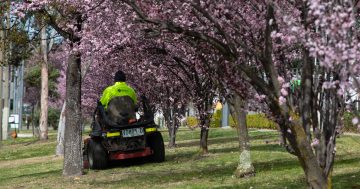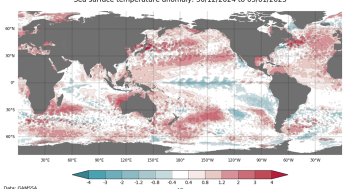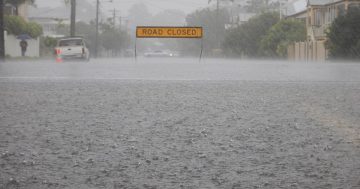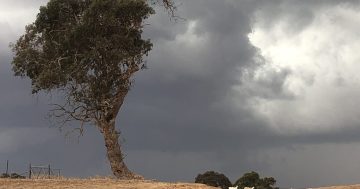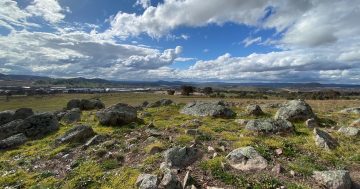
Get set for an Easter full of sunny skies like this on the path to the Margaret Whitlam Pavilion and the Gallery of Gardens at the Arboretum. Photo: Michelle Kroll.
Canberra and the surrounding region will have perfect conditions for the Easter long weekend, with clear skies and warm, sunny days on the horizon for all four days from Friday, 2 April, to Monday, 5 April.
After being deluged for more than a week of almost constant heavy rain and floodwaters in late March, there is one dominant factor in the forecast for Easter: sunny!
The Bureau of Meteorology (BOM) says Canberra will enjoy four days of sunshine, with light winds, which are typical autumn conditions.
On Friday, 2 April, Canberra is expected to reach a maximum temperature of 27 degrees Celsius, followed by more of the same on Saturday.
On Sunday, 4 April, it just gets better with a maximum temperature of 28, while Monday is forecast to be slightly cloudy with a top of 26.
Overnight temperatures will be cool, about 9-10 degrees Celsius, and there is a chance of fog in the morning.
BOM says there is zero chance of rain on the long weekend.
The only difficulty will be choosing which part of the region to enjoy, with perfect autumn conditions expected in all parts of the region, especially on the NSW South Coast.

Batemans Bay will be popular this Easter long weekend following the opening of the new bridge last weekend. Photo: Josh Burkinshaw Images.
At Batemans Bay and down the South Coast, sunny days and light winds are forecast until Monday, 5 April, when the temperature will drop back to about 21 degrees with a 60 per cent chance of rain.
On Friday, Saturday and Sunday, conditions on the South Coast will be near perfect with sunny days and maximum temperatures between 26-28 degrees.
The great weather is due to a high-pressure system near western Victoria that will slowly drift east over the Tasman Sea. The presence of this system will promote stable weather across most of the ACT and NSW this week, with daytime temperatures gradually increasing and showers restricted to parts of the state’s northeast.
Meanwhile, BOM says the La Niña weather pattern that has caused so much rainfall in recent months is officially inactive as indicators have now returned to neutral levels. Climate model outlooks suggest these indicators will remain at neutral levels until at least the end of winter.
BOM also says there is little indication of a return to La Niña patterns in the coming months, which is also typical of the life cycle of these events.












